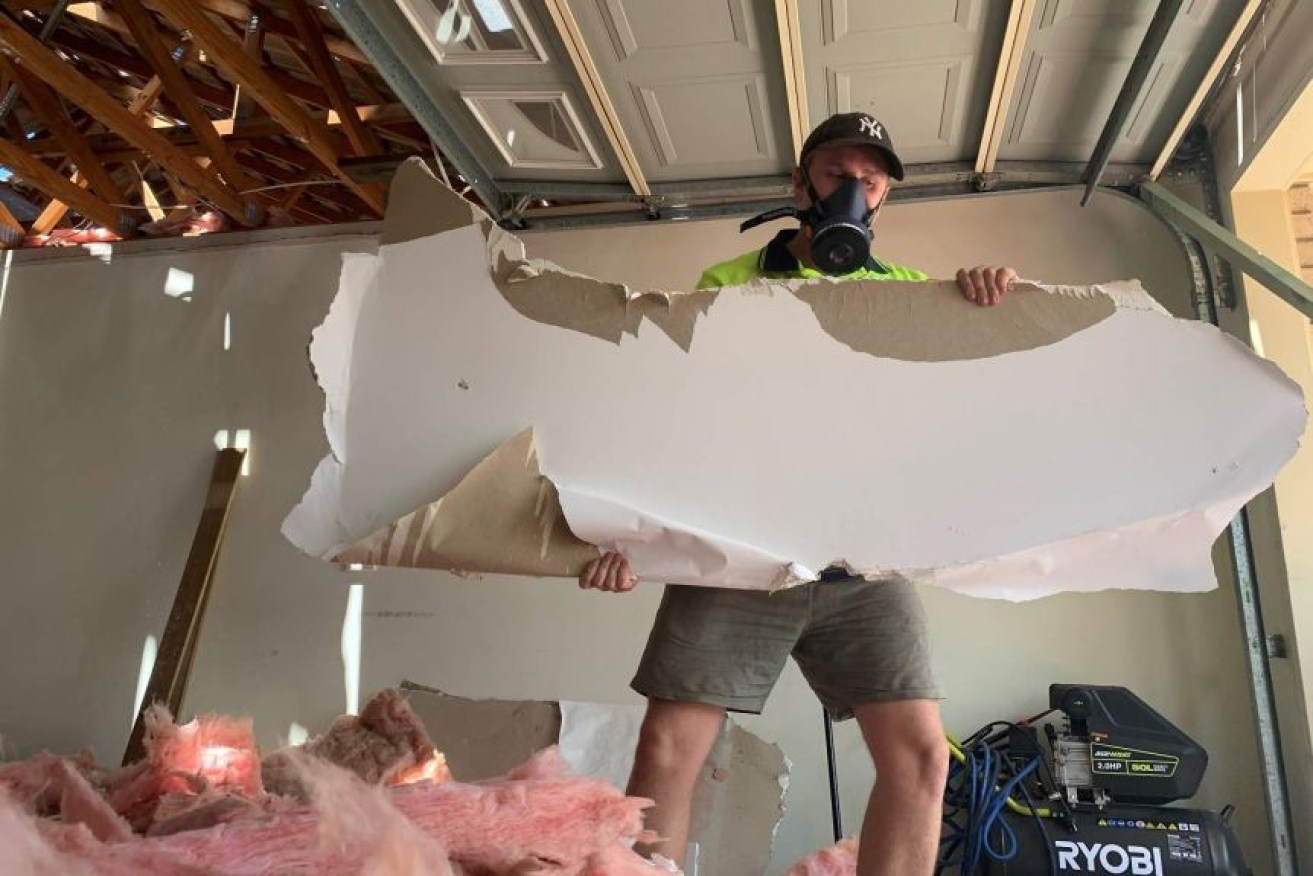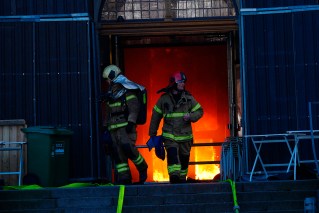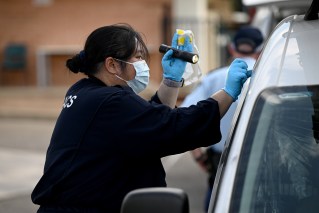‘Catastrophic’ storms lead to thousands of insurance claims, homes deemed ‘unliveable’

The Ratcliffe's home was severely damaged with hailstones destroying their roof. ABC News: Anna Hartley
Homes in south-east Queensland pummelled by enormous hailstones on Saturday have been deemed “unliveable” with insurers warning residents to beware of “disaster chasers” preying on vulnerable households.
The Insurance Council of Australia (ICA) said more than 8500 claims had been lodged, with estimated insurance losses exceeding $110 million.
RACQ spokesperson Renee Smith said the insurance company was receiving about 100 damage claims an hour.
“The majority of our claims are for motor vehicle damage but some of the reports through of what our members are experiencing, the damage to their homes, is devastating,” Ms Smith said.
“We do have emergency accommodation that we are covering for those who are in homes that are just unliveable, and that is the reality from this storm.”
South-east Queensland mops up after giant hail smashes homes
The hardest-hit suburbs include Springfield, Rosewood, Greenbank and Boronia Heights, as well as parts of the Sunshine Coast.
ICA chief executive Andrew Hall said insurers had already received reports of disaster chasers doorknocking homes in damaged neighbourhoods.
“Disaster chasers are a menace and are becoming bolder,” Mr Hall said.
“Many disaster chasers offer urgent inspections or repairs for cash but leave the work either poorly done or not completed.
“Some disaster chasers operate as small businesses, such as roofers — they pressure the householder to sign a contract on the spot and may promise that an insurance company will pay for all work.
“Some have been known to use standover tactics to demand money.”

Golf ball-sized hail hit Adare near Gatton. Facebook: Kayla Kleinhans
SES working to clear backlog
SES crews have been on the ground since Saturday evening, but regional manager Wayne Hepple said it would take several more days to clear the backlog.
“We’re very close to 2,000 calls for assistance from the public … and currently we have about 1,560 jobs across the region still requiring assistance,” Mr Hepple said.
“Teams probably get five jobs completed over the course of a day, so it does take up a lot of personnel and it does take up a lot of time.”
Mr Hepple said the extent of the damage to some homes meant there was little the SES could do to help.
“A lot of houses have been pretty well deemed uninhabitable,” he said.
Bureau of Meteorology research scientist Dr Joshua Soderholm said reports of 14-centimetre hail stones were among the largest recorded in the country.
“Ten centimetres is already quite rare; we’d only get one report every year or two,” Dr Soderholm said.
“Fourteen centimetres is equal to the maximum recorded in the Australian Severe Storms Archive, a database going back decades.
“I just could not believe that Australia was seeing hail stones this large, particularly so close to a capital city.”

Rosewood, west of Ipswich, was hit with giant hail. Photo: Facebook
Hail in your freezer? Researchers want to analyse it
Researchers from the University of Queensland are urging residents with hail stored in the freezer not to throw it out.
Dr Soderholm said hail stones 10 centimetres or larger could provide valuable insights into the severe storm cells.
“There’s very little studies that have been done on them, so it’s quite a unique opportunity we have here,” he said.
Dr Soderholm said Saturday’s large hailstones were “particularly rare” and difficult for researchers to get their hands on.
“The first thing we do is we actually collect a 3D scan of it, because the shape of these giant hailstones actually gives you a lot of evidence as well about how they grew,” he said.
“Second thing is we cut them straight down the middle and then we cut a very thin slice out of it.
“This slice lets us look at those growth rings – which are like onion rings – and that’s what gives us a lot of information about all the processes going on in the storm as it was growing.”
He said the best way to preserve hail was by putting it in a plastic bag to stop it from shrinking.








